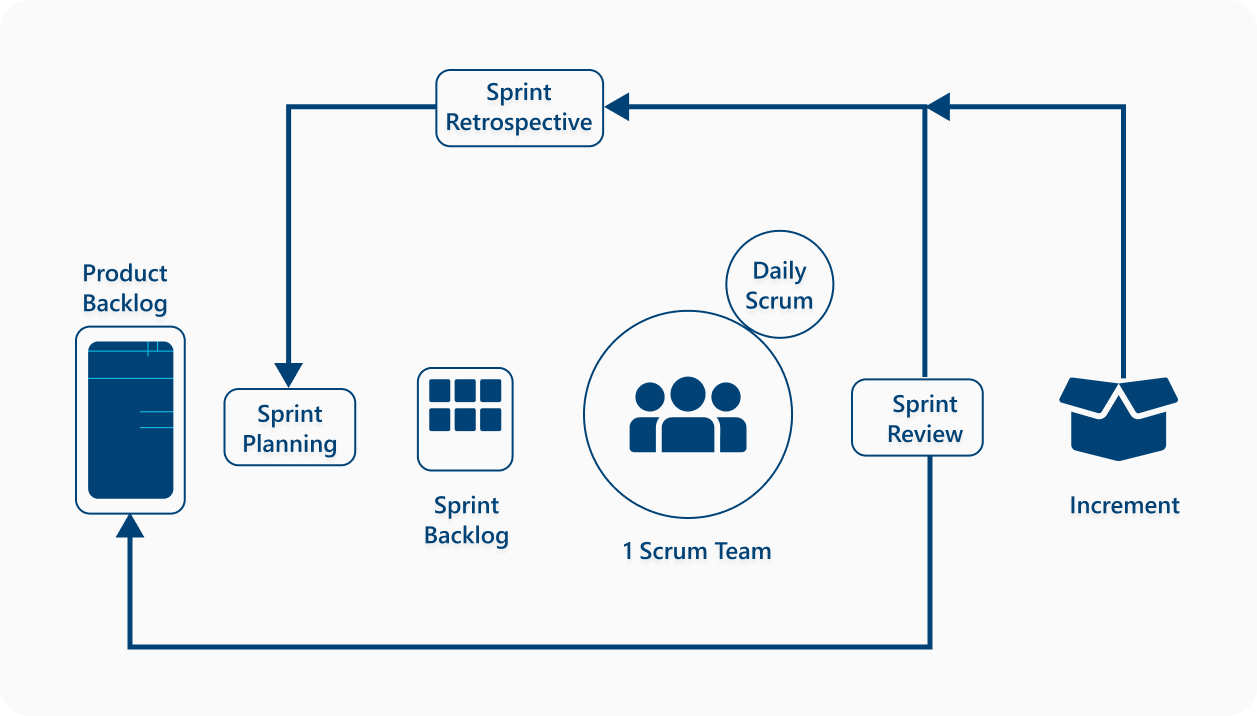Tech product development can be a challenging process that involves cost, experience, and company capacity. However, entrusting the entire process to proven professionals can save you time and budget. It ensures your business thrives, whether it is solving internal business issues or opening new revenue streams.
In all stages of product development, whether it is product strategy planning, product design phase or development & maintenance we use mostly an Agile mindset, scrum framework, kanban or waterfall methodology depending on the scope and requirements and complexity of the project.
CLIENT INVOLVED AND HEARD
Our team develops an evolving prototype at the beginning of the project. Frequent meetings allow us to receive and adapt to new information and feedback.
FAST-MOVING DELIVERY TEAM
Large tasks are divided into smaller tasks and performing cycles of building and testing to learn and adapt incomplete prototypes based on client feedback. Each iterative cycle creates deliverables for the client, which helps the client to continually see the product progress.
TRANSPARENT AND REFLECTIVE PARTNERSHIP
Agile mindset enhances learning processes in the company, improves processes, builds trust, and creates healthy work relationships with involved stakeholders.
MITIGATED RISK
The Agile mindset accepts that project change is inevitable. In the context of a product release, the tasks that are the most technically difficult and hold the larger risk tend to be done in early iterations to ensure that the risk can be minimized.
FLEXIBLE CUSTOMER INPUT
At the end of every sprint the product team delivers demonstrable functions. The process of securing customer feedback is simplified as ready items can be shown to customers at any stage, instead of having to wait until the final released product.
QUALITY BUILT IN
Our team members test new functions as they are delivered, and found cases are executed with every iterative sprint at any time during the project, not just during completion of the development phase. Although regression testing might occur at the end of the phase.
How do we work?

Creating A Cross-Functional Team
Establishing an Agile team of 5-9 people, including the functions of larger development departments, developers, testers, documenters, scrum master, Agile coach and product managers. Team members are self organising; they decide how and who delivers the requirements within an iteration.

Creating A Backlog: A List Of Priority Needs
The backlog is a dynamic set of requirements that can change at any time. The client and team will work together to always adjust the scope of work to ensure that the most valuable tasks are completed first. The backlog is constantly updated and refined to plan for any release of a product on a particular date.

Assigning Sprint Deliveries
Sprints are smaller amounts of delivered requirements, which are taken from the backlog in their order of importance. A key aspect of a sprint is that it resembles a mini project between 1-4 weeks. Note that one sprint might not produce a marketable release. However, the team should be able to demonstrate all agreed upon functions at the end of the sprint.

Daily Stand-Ups
Every day during a sprint, the team will hold a daily touchpoint. During this meeting, each developer will align with the team and outline their progress and obstacles encountered. This allows them to resolve issues quickly and improve the developers productivity. The scrum master owner of the process removes obstacles as they appear

IT projects don’t have to be complicated
we’ll help you choose the right solution.
